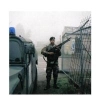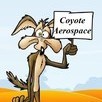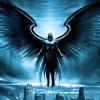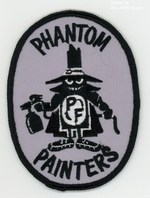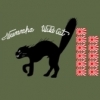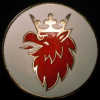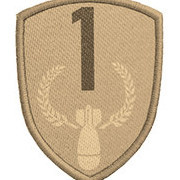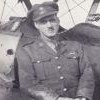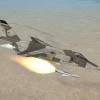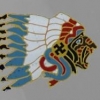Leaderboard
Popular Content
Showing most liked content on 04/11/2021 in Posts
-
7 points
-
7 pointsBuddy didn't hug Thud Ridge, SAM did hug buddy At this point, I should probably have B-52s escort ME! Sorry, just trying not to get pinged by Kurnass
-
6 points
-
5 points
-
5 pointsHi guys, I solved my issue with the VF-31. Simply , as something is in this cases, is my fault ( when stupidity reign supreme...). The mod have three Campaigns with VF-31/Forrestal, I simply added the skin to the wrong one; for any good count,now each one Campaign are with my skin, at wich I replaced my previous star&bar as I don't like too much. Also I've pratically finished the VF-32 skin
-
5 pointsS-3A/B-templates for Foxmonters old model - only weathering, some details and generic markings missing yet. If someone has pictures and infos on maintenance-stencils, please PM me. Thanks.
-
4 points
-
4 points
-
3 pointsFirst mission from my Johnny Tripehound campaign. The experiences are amazing.
-
3 pointsEvery ground object has a declaration GroundObjectRole= The stock SF ground objects available are: GroundObjectRole=TANK GroundObjectRole=APC GroundObjectRole=RECON GroundObjectRole=ARTILLERY GroundObjectRole=COMMAND GroundObjectRole=MOBILE_AAA GroundObjectRole=STATIC_AAA GroundObjectRole=MOBILE_SAM GroundObjectRole=STATIC_SAM GroundObjectRole=EW_RADAR GroundObjectRole=SAM_RADAR GroundObjectRole=CARGO_SHIP GroundObjectRole=PATROL_BOAT GroundObjectRole=WARSHIP Only WARSHIP ground objects require a declaration of WarshipClass= The stock SF warship classes, which require a declaration of WarshipClass= are: WarshipClass=AIRCRAFT_CARRIER WarshipClass=CRUISER WarshipClass=DESTROYER WarshipClass=FRIGATE WarshipClass=TRANSPORT There is also WarshipClass=BATTLESHIP declaration available in the SF2 GroundObject.DLL, although no stock SF warships use it. CARGO_SHIP and PATROL_BOAT ground objects do not require a WarshipClass= declaration. If there is one in patrol boat object you have it probably won't do any harm, but the line is not needed.
-
3 points
-
3 points
-
3 pointsAvi Lanir's Shahak #60 covered in soot after flying through an exploding Syrian MiG-21 courtesy of his 30mm cannons, 7 April 1967.
-
2 points
-
2 points
-
2 points
-
2 points
-
2 points
-
2 points
-
2 points
-
2 points
-
2 points
-
2 points
-
2 pointsI was thinking of making vietnam US ground bases that is if we don't have them please let me know if we do have sutch bases or not and which one you want me to make first from these photos. Or if you have any please post them
-
2 points
-
2 points
-
2 points
-
2 points
-
1 pointDear Friends! Today’s DD is not long, but wanted to say that in addition to working on many aircraft, features and improvements, we’re also making some moves internally with the addition of, and search for, new personnel while adding responsibilities to others. This adds overhead costs to our operation which we hope will pay for itself in time, but we ask that you continue your financial support of Sturmovik throughout this spring and summer and al of 2021 by purchasing new content and buying gifts for your friends, family and squadron-mates. And please remember, purchases made directly in the IL-2 Official Webstore benefit the team the most! Without further delay, here are the first pics of the work-in-progress Nieuport 28.C1 for Flying Circus: Volume II. The N28 drafts the U.S. Air Service in the war and her slender lines make her a real beauty. Also notice our new Tactical Codes technology is present. The damage model is next up for her as well as DVD adaptation. …. Geronimo!!! No invasion of Normandy can be complete without paratroopers! These guys will be jumping from our C-47s later this year after they are properly animated. Enjoy your Easter weekend if you celebrate it and see you in the skies and the battlefields! The Sturmovik Team
-
1 pointI think you are looking at the wrong section. [LeftElevator] and [RightElevator] are the crucial sections: [LeftElevator] ... MaxControlSpeed=162.29 ControlMachTableNumData=4 ControlMachTableDeltaX=0.05 ControlMachTableStartX=0.86 ControlMachTableData=1.000,0.920,0.681,0.000 ...
-
1 point
-
1 point
-
1 point
-
1 pointOriginally posted on simhq: I can confirm that v. 2.02 of the Historical Weather mod is fully compatible with BHaH2! Activate the usual way, with JSGME. I have also looked at the OCM, and it also appears to be compatible, although a few features will not be fully implemented until JJJ's Mission Editor is made compatible with BHaH2. OBD also made a few minor changes to a few cloud files, but that does not appear to affect whether the mod works or not. Now that BHaH2 is out, I also plan to update the OCM in another of my continuing efforts to cut back on the annoying cloud popping and flashing. For this, I would like to benefit from your assistance. The next time you fly a campaign mission where you encounter significant cloud popping or flashing, whether you use the cloud mod or not, please reply to my Optional Cloud mod thread at simhq, briefly describe the problem, and then attach a copy of the OFFDynamicMissionWeather.xml file to your post. This will help me to identify the clouds which are contributing the most to this problem. Just make sure to copy the file before you fly the next mission, because the OFFDynamicMissionWeather file changes when you click the button to start your next mission. This will really help me to solve this nagging problem. Thanks to any and all who participate.
-
1 pointI can get pretty good frame rate from CFS3 but applying Ankor's Shader dramatically drops the frame rate and want to play WOFF without shaders like on CFS 3. Thanks for your advice anyway Von
-
1 pointUnder the "Workshop" settings in the WOFF menu, choose "default shaders" instead of "DX9 enhanced shaders." Having said that, I recommend keeping enhanced shaders on and trying out my WOFF GPU Tuner Patch instead (for WOFF PE, for WOFF UE see instead my tips under the long "WOFF on a Mac" thread on SimHQ). From previous tests on my rigs., choosing default shaders (DX8 I think they were?) gives worse FPS and less sharp graphics. Cheers and happy tinkering, Von S
-
1 point
-
1 pointI haven't seen any mods that feature this stuff, unless krfrge made something that slipped by.
-
1 pointThank you! I'm just going to try to 'distress' the roundels and rudder a bit and I'll upload it asap.
-
1 point
-
1 point
-
1 point
-
1 pointIm going to do exactly the same Harry, ive had a small FPS drop but it all feels smoother im leaving any mods off for the time being. The lads have done a absolutely cracking job.
-
1 point
-
1 point
-
1 point
-
1 point
-
1 point
-
1 point
-
1 pointNever in the field of Human conflict have so many hampered, limited and controlled so few as in the air campaign in North Vietnam. (Churchill + HW Baldwin) Note - These articles are a compacted summary of a rather large topic and cannot include every detail. The Muppet Show that was Lyndon B Johnson, Robert McNamara, and friends demonstrating how they didn’t have a clue when running Rolling Thunder from the White House was certainly almost criminal if not treasonous. However, the lack of understanding didn’t stop there because the SAC dominated US Air Force was also trying to run things from afar leading to some very strange policy decisions for those in the field. Air to Air Training in Vietnam To fight and use guns A-A you need to be trained in the first place, if you wish to become experienced that is. If you remember the pilot comments from Part 1 you may have noticed the ones from the USAF seemed to include comments regarding poor training and back seat drivers……. USAF training Not wanting to fight a long war with the same group of pilots the USAF set up a policy that would rotate the available pilots. USAF policy was thus to fly a tour which was 1 year in South Vietnam, or 100 missions over North Vietnam. Unfortunately, the war went on longer than expected and basically, the USAF had problems getting enough pilots to fill the roles. One great way [or not] around this was to lower standards and send through pilots that may have been washed out pre-war. Part of policy was to produce “universal pilots” that could in theory fly any aircraft, so yes transport pilots who perhaps never had the aptitude to fly fighters now transitioning to fighters and being sent to Vietnam. The Replacement Training Units (RTUs) produced pilots poorly trained in A-A because of the USAFs corporate beliefs that ACM among inexperienced pilots would lead to accidents. USAF culture at the time was obsessed with flying safety. [Dying in combat due to lack of basic training was not on the Health & Safety spreadsheet perhaps!] Another problem was the time it took to train A-A didn’t quite fit in with the time they wanted to spend training a pilot before sending them into combat (fixed at 6 months at one point). By 1967, 200 pilots a month were entering training, however the quality had deteriorated to a point where they were having problems completing the landing/take off part let alone the rest! To add to the mess the USAF had too many Navigators and not enough Pilots. So, what did they do? That’s right they started sticking 2 pilots in each F-4 as policy. The ‘genius’ idea being that the pilot in the back would learn the systems then move to the front seat. In reality it seems the pilot in the back was a waste of a pilot that was not trained properly or interested in learning the radar systems. This and other factors lead to the two-man crew being anything but an effective team in combat!! F-4s and F-105s around a KC-135 (USAF) US Navy Training Unlike the USAF the USN couldn’t lower the bar /standards to get more pilots because they had to be able to land on a carrier, and it was decided early whether they were fighter or heavy. Because of this USN pilot tours were typically longer than USAF ones (over 100 missions up North) and pilots would fly 2 combat cruises every 14 months by policy from 1967 to ensure there was some rest period. Unlike the USAF, the Navy used highly trained, and dedicated RIOs (Radar Intercept Officers) in the back seat, that funnily enough worked a lot better. F-4Bs from VF-111 Sundowners (US Navy) How Rolling Thunder changed air to air training (or not) USAF Decided the poor performance during Rolling Thunder was more related to technical issues, and actually reduced air-to-air training after 1968 if you could believe something so ridiculous [the 2 pilot F-4 policy was at least rescinded!]. Although it was recognised by most it needed to change urgently, the internal politics and policies meant that was not happening. Real change only happened after 1972 with the change in high level staff and attitudes leading to the creation of programs like Red Flag. US Navy After the dismal F-4 air-to-air results the USN decided its F-4 pilots had not been adequately trained properly. Being ‘fleet defense’, training was based on using missiles and they had even abolished the Fleet Air Gunnery Unit in that time. Thus, air-to-air combat skills had deteriorated. [note: this didn’t apply to the well-trained F-8 crews of course that had far better results] This lead in 1969 to the creation of the Navy Fighter Weapons School (Top Gun) to get the Navy F-4 crews back to speed. The Navy also improved the technical side - including better over land detection with the ALQ-91 ( Similar to ‘Combat Tree’), and had significantly better AIM-9 versions such as the D/G/H. F-4J from VF-114 (US Navy) How did the different attitudes to training work out for the USAF? During Linebacker 1 & 2 the US Navy kill ratio against MiGs was 6-1 and the USAFs was 2-1 however the kill ratios don’t include all the factors e.g. USAF F-4D/Es had Combat Tree, flew different Route Packs etc. So, to illustrate how inept USAF training really was at the end of US involvement in the war. In August / Sept 1972 a group of USN F-8 pilots spent a few weeks at Udorn RTAFB flying A-A training (or DACT) against USAF F-4 crews of the premier USAF MiG killing wing. The well-trained F-8 pilots [who had been used to dueling with USN F-4 Top Gun pilots] embarrassed the USAF F-4 crews, and were appalled at the tactics, training and lack of skill from a supposed A-A unit. An F-8 pilot said,” The contest between the F-4 and F-8s was so uneven at first we were ashamed by the disparity. The sight that remains in my mind is a chilling one for any number of MiG pilots must have identical views. The pitiful sight of four super fighters [USAF F-4s] in front of you all tucked in finger four, pulling a level turn. An atoll fired anywhere in parameters would be the proverbial mosquito in a nudist colony and wouldn’t know where to begin.” (Clashes by ex USAF F-4 veteran Michel III) The USN F-8 pilots felt the USAF crews needed basic instruction, not just training missions! Also consider that some of the USAF pilots were instructors or graduates of the USAF Fighter Weapons School, that was still preaching obsolete useless tactics and was resistant to change. This only confirmed what the USAF pilots already knew (they were so far behind). The USN report when sent to PACAF was dismissed by some as inter-service bias it seems. This next account sums things up perfectly: In 1974 the Air Force reassigned me from an overseas assignment in England to Nellis. When I arrived, I had over 1,200 hours in the F–4, including 365 combat hours. I had never flown a dissimilar air combat sortie (DACT). I had never carried a training AIM–9 and had not even seen one since my combat tour four years earlier. I had never used a gun camera. The only tactical formation I had flown was Fluid Four/Fighting Wing. I had never intercepted a target at low altitude. In other words, I was a typical F–4 pilot with a combat tour. (CR Anderegg - who went on to fly the vastly superior F-15 along with some actual A-A training!) F-4Bs of VF-114 (US Navy) The not so mysterious case of the VPAF Aces The first batch of VPAF (Vietnamese Peoples Air Force) pilots were sent in 1956 to China and were being trained on MiG-17s by 1960 in both China but primarily in the Soviet Union. The MiG-17 had no missiles initially and thus air combat employing guns had to be taught, so training included things like dogfighting. Drop outs were high with only around 20% of the pilots passing by the mid-1960s (the rest becoming ground technicians). This was lower than other Soviet ally nation pilots who typically had a better baseline education and had often already flown aircraft. [some of the Vietnamese had literally never seen an aircraft before] Over North Vietnam the MiGs became part of an Integrated Air Defence system (IADS) and had to fit around the AAA and later SAM defenses flying in restricted areas and altitudes and often tied to the GCI (Ground Control Intercept) stations. The VPAF were also consistently changing tactics that the pilots had to adapt to. However, the MiG pilots mostly had only one primary role and that was air-to- air combat. Being outnumbered but often having better situational awareness they often fought ambush “hit and run” tactics in small numbers. [this was smart!] What we can deduce is: They didn’t fly a 100-mission tour then go home, they had to fight until death. Fighting for their home land probably meant motivation and dedication were not an issue. [Unlike the US, the VPAF were fighting a ‘total war’] If they were shot down and survived then they were still on home turf. With the experience and training some of these pilots were no doubt very skilled flyers. So, for example out of 18 VPAF MiG-21 pilots given official Ace status, 16 of them were shot down and some of them were shot down 3 times! MiG-21MF Fishbed with AA-1s and AA-2s (Wikipedia) Let’s do the myth and mystery of Colonel Tomb Prior to better information the ‘13 kill ace, Colonel Tomb’ was apparently shot down and killed on 10 May 1972 in a famous (and very close) 1 v 1 MiG-17F v F-4J dogfight against US Navy Top Gun Graduates Randy Cunningham/Willie Driscoll. Willie Driscoll in a 2018 podcast describes how capable he thought the pilot was. [but still also thinks he had 13 kills to his name]. Showtime 100 downs a MiG-17 (dogfighthistory.be) In 2007 A document called On Watch was declassified and released by Freedom of Information by the National Security Agency (NSA). In the section “Comrade Toon Flies the unfriendly skies”, it seems that NSA SIGINT analysts were able to unlock the MiG pilots callsign system and had identified an ace who flew out of Phuc Yen called “Toon”. Head of the Seventh Air Force General Momyer wanted him out of the skies and it is said became obsessed with getting rid of him. It states: “The SIGINT detachment alerted Momyer’s HQ whenever Toon was scheduled to fly a mission, and Momyer would send his planes aloft to hunt down the Red Baron of North Vietnam.” It seems that Toon was quite adept at avoiding these aircraft and one dark night [no date] after taking off from Vinh (South NVN) in a MiG-21 and avoiding the US fighters he intercepted a flight of B-52s and fired 2 missiles. One failed but the other lodged into the wing of a B-52 and didn’t detonate. Despite this the B-52s, following standard procedure ditched their ordnance and so he had a mission kill anyway. It states they were never able to catch him (or perhaps it meant "them" ?). Trying to match this up...........In 1971 MiG-21 Ace Dinh Ton appears to be the only Ace [6 claims / 4 match up] involved in intercepting B-52s from South NVN. On the 4th October he took off from Dong Hoi (near Vinh), but was unable to fire on the B-52s because of the Escorting F-4s. On the 20th November Hoang Bieu took off from Vinh [MiG-21] as a diversion and another pilot (Vu Dinh Rang) was able to fire two R-3S Atolls [from his MiG-21] at a B-52 and one of the missiles hit and damaged the bomber. This was the first successful intercept of a B-52 according to the VPAF [ USAFs "War Above The Clouds" does mention a Missile fired from a MiG at B-52s on the 20th November during Commando Hunt VII - causing the mission to be called off ] So, although it looks like there really was an ace called Toon I do wonder if they were able to see everything and not still tracking different pilots. If [big if] the real Toon was Dinh Ton, then he was eventually shot down on 11 Sept 1972 in a MiG-21U by a VMFA-333 F-4J (Lasseter/Cummings) Both Ton and the backseat IP ejected safely. No VPAF pilot claimed more than 9 kills, the 13 number most likely came from VPAF MiGs photographed and sent to the media at the time including May 1968 a photo of MiG-21PFL (4326) with 13 red stars (kills) on its nose and MiG-17 (3020). In reality the 13 kills were the sum of those claimed by several different flyers of that Jet. MiG-17 Fresco (warbirdsresourcegroup.org) So, who did Driscoll / Cunningham shoot down then on the 10th May? Four MiG-17s were scrambled to intercept the raid on the Hai Duong Railway yard that Showtime 100 (Cunningham/Driscoll) was covering. Pilots Do Hang, Tran Van Kiem, Nguyen Van Tho were 923rd regiment MiG-17 pilots hit by missiles on that date but nothing conclusive describing a prolonged 1v1 fight. (Hang and Kiem were both killed) There were J-6s (Chinese MiG-19s) also in combat that day (925th regiment) but over different areas. Only Le Duc Oanh was shot down on the 10th being hit by a missile and ejected (later died of injuries) but not described as a prolonged 1v1 dogfight. Le Van Tuong was the other fatality when he overran the runway and turned over. No MiG-19/J-6s claims were made by the US on the 10th despite one being shot down - they were probably (understandably) misidentified as MiG-17s it seems by US pilots in the heat of combat. Shenyang J-6 / MiG-19S Farmer (vnmilitaria.com) When it comes to A-A guns over Vietnam let us not forget The F-8 Crusader Unlike the USN F-4 pilots the F-8 community was well trained in traditional BFM/ACM from the start and could make use of the 4 cannon in its nose providing they didn’t fire them under high G loading that caused them to Jam! (Leading one pilot to describe the guns as very unreliable under High G loading). This training served them well and by the end of Rolling Thunder the stats would suggest they did well compared to the F-4 units, which of course was replacing the F-8s at that time. Out of the 19 A-A kill claims, 3 were with the gun. F-8E (Seaforces.com) The F-105 Thunderchief In somewhat of a paradox the USAF F-105 had the most encounters over Vietnam with MiGs and racked up about 26 MiG-17 kills (out of 140 gun engagements) with its M61A1 Gatling Gun. Some F-105 pilots had complained of poor A-A training in Red Baron. Jack Broughton described a different community with many old heads from Korea who knew their A-A anyway (considered themselves fighter jocks) and trainees were taught when they came to theatre. Some probable reasons for the gun kills include: The F-105 often didn’t carry AIM-9Bs due to available pylons or sometimes lack of availability. The AIM-9B was inferior to the AIM-9D used by the F-8. The M61A1 was far more reliable than the F-8s (MK-12) guns, only failing in about 12 percent of firing passes Being ‘All Aspect’ the gun was easier to employ over the restrictive AIM-9B envelope. F-105D - king of the Brrrt (Global Aviation Resource) Guns on modern fighters (the F-35A) The last US A-A (manned) gun kill was in Feb 1991 when an A-10A shot down an Iraqi Mi-8 Helicopter. There is also a 1992 video of a FAV F-16A gunning down an OV-10E in a Venezuelan coup. But who cares really because guns have been used in all the low-key wars since then. In fact, jets including the F-14/16/15/18/Harrier have all used guns to strafe enemy personnel and equipment on a very regular basis. So, as we see just in 1963 with the F-4E, the requirement for a gun for Air to Ground is just as strong now as it was then. Let’s look at why the USAF may have put an internal gun on the F-35A, according to a 2007 paper by Colonel Charles Moore who was so adamant the F-35A needed a gun that he writes: Regardless of the opinions of the USMC, USN or (F-35) Joint Program Office, the USAF must not become dismayed or discouraged by the difficulties in achieving the capabilities it has determined it required. Within the air to air and air to ground environments, the gun has proven to be a reliable and irreplaceable weapon. Even if Lockheed [Martin] declares it will not be able to fully meet the requirements and specifications the USAF desires, disallowing requirement relief sends a strong message that the capabilities offered by the gun are not negotiable. Important these are “Arguments For” only (there are probably very valid arguments against) and quite a few things can change in 11 years! His arguments include: On A-A use A-A missiles do not have a 100% PK, especially against advanced adversaries. Its limited missile supply could be exhausted quickly if faced by a significant number of low tech adversaries. The F-35 may not be able to egress from all adversaries based on its slower speeds and may need to stay and fight. When defending other assets, it may need to stand and fight regardless. Gun employment is less reliant on on-board systems working such as radar. All the modern tech in the world cannot protect an aircraft from the oldest weapon in A-A combat [when in range]. The Gun is simple, efficient, effective and always available. On Gun Pods It is seldom known when you will need a gun system so carrying it only when needed is not practical. Risk of RCS (Radar Cross Section) increase. Risk of having performance issues like the previous gun pods e.g. GAU 5 (Pave Claw) or SUU16/23 Additional logistics required. On A-G use Despite being poor in power compared to PGMs and IAMs, the gun will remain after those have been expended and can be used if called upon. This happened many time in Desert Storm, Enduring Freedom and Iraqi Freedom. Can be used where PGM/IAMs are too powerful and can be prohibited or ill-advised such as urban situations. Can be used on moving targets. Gun considered the only true multi role weapon to be carried. Can be used to supress (rather than kill) and provide just a warning. Sometimes offers a quicker reaction time because of less setup over other ordnance. Less dependent on targeting sensors so can be used in event of failures with those. F-35A Lightning II - gun is port side (USAF) Sources Clashes (M.L.Michel III, 1997) Naval Institute Press Thud Ridge (J.M.Broughton, 1969) Crecy Publishing F-105 Thunderchief MiG Killers of the Vietnam War (P.Davies, 2014) Osprey Publishing F-8 Crusader Units of the Vietnam War (P. Mersky, 1998) Osprey Publishing MiG-21 Units of the Vietnam War (I.Toperczer, 2001) Osprey Publishing MiG-17 and MiG-19 Units of the Vietnam War (I.Toperczer, 2001) Osprey Publishing MiG-21 Aces of the Vietnam War (I.Toperczer, 2017) Osprey Publishing MiG-17 and MiG-19 Aces of the Vietnam War (I.Toperczer, 2017) Osprey Publishing USAF McDonnell Douglas F-4 Phantom II (P.Davies, 2013) Osprey Publishing USN McDonnell Douglas F-4 Phantom II (P.Davies, 2016) Osprey Publishing US Navy F-4 Phantom II MiG Killers 1972 -73 (B.Elward & P.Davies, 2002) Osprey Publishing US Navy F-4 Phantom II MiG Killers 1965 -70 (B.Elward & P.Davies, 2001) Osprey Publishing USAF F-4 Phantom II MiG Killers 1972 -73 (P.Davies, 2005) Osprey Publishing USAF F-4 Phantom II MiG Killers 1965 -68 (P.Davies, 2004) Osprey Publishing The Revolt of the Majors: How the Air Force changed after Vietnam (M.L.Michell III) RED BARON Project Volume I - III (1969) Weapon Systems Evaluation Group (WSEG) The Need for a Permanent Gun System on the F-35 JSF (Colonel C.Moore, 2007) Air Force Fellows Air University, Maxwell AF Base SIERRA HOTEL (C. R.ANDEREGG, 2001) Air Force History and Museums Program All the Missiles Work (Fino, SA, 2015) Air Force Research Institute Research Study of radar reliability and its impact on life-cycle costs for the APQ-113. 114, -120 and -144 radars (1973). Technical report by General Electric under contract to the USAF. McDonnell F-4E Phantom II (Baugher J, 2002) online ON WATCH Profiles from the National Security Agencys past 40 years (1984) National Security Agency War from above the clouds (Head WP, 2002) Air University Press Maxwell AFB Information on F-4E radar range from Forum entry by ex F-4 flyer Walt BJ (Bjorneby, Walter) Willie Driscoll interview from Podcast Episode 009 “Vietnam Ace” (V.Aiello, 2018 ) http://fighterpilotpodcast.com/ Title photo credit USAF
Important Information
By using this site, you agree to our Terms of Use, Privacy Policy, and We have placed cookies on your device to help make this website better. You can adjust your cookie settings, otherwise we'll assume you're okay to continue..

